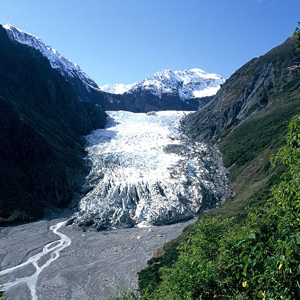Frozen virus probed
 A new study reveals the evolutionary history of viruses preserved in glacial ice.
A new study reveals the evolutionary history of viruses preserved in glacial ice.
The research offers new insights into how climate change has shaped microbial communities over millennia.
By analysing genetic material extracted from a 310-metre ice core drilled from the Tibetan Plateau's Guliya Glacier, researchers identified 1,705 virus species across nine distinct periods spanning the past 41,000 years.
The study, published in Nature Geoscience, reveals that the composition of viral communities shifted significantly between cold and warm periods.
Researchers led by Professor Zhi-Ping Zhong used advanced DNA extraction and metagenomic techniques to reconstruct viral genomes from different layers of the ice core, which serve as time capsules of past environments.
Their analysis demonstrated that the diverse viral communities exhibited distinct patterns of change aligned with the Earth's historical climate transitions. One of the most notable findings was the dramatic shift in viral communities around 11,500 years ago, during the transition from the Last Glacial Stage to the warmer Holocene epoch.
The researchers propose that these changes in viral communities were likely influenced by multiple factors, including the specific origin of the viruses and the environmental conditions they encountered on the glacier.
Some viruses may have been transported by wind from distant regions, while others may have been selected by the harsh conditions on the glacier itself, where only the most resilient viruses could survive.
The team also examined the metabolic genes of bacteria that were likely infected by these viruses.
Their findings indicate that the viruses may have driven long-term adaptations in their bacterial hosts, enabling both viruses and bacteria to endure extreme environmental conditions.
It is a display of the intricate interplay between viruses and their hosts in response to climatic changes, and could improve understanding how microbial ecosystems will respond to ongoing global warming.
The study provides crucial insights into the potential risks associated with the release of ancient viruses and bacteria as Earth's glaciers continue to melt due to global warming.
The researchers have highlighted how these ancient microorganisms were able to survive in extreme environments over tens of thousands of years. The fact that these viruses and their bacterial hosts adapted to such conditions suggests that they could remain viable once released from the ice.
However, the study also underscores the significant uncertainty surrounding the eventual impact of these released microorganisms on current ecosystems and human health.
The ancient viruses identified in the ice core represent a variety of species, some of which may be completely unfamiliar to modern science.
While the viruses may not pose a direct threat to humans, their interaction with contemporary microbial communities could disrupt existing ecosystems or introduce new variables into the environment.
The study calls for further research to understand the potential risks and ecological impacts as these microorganisms are released from their icy prisons into a warming world.








 Print
Print